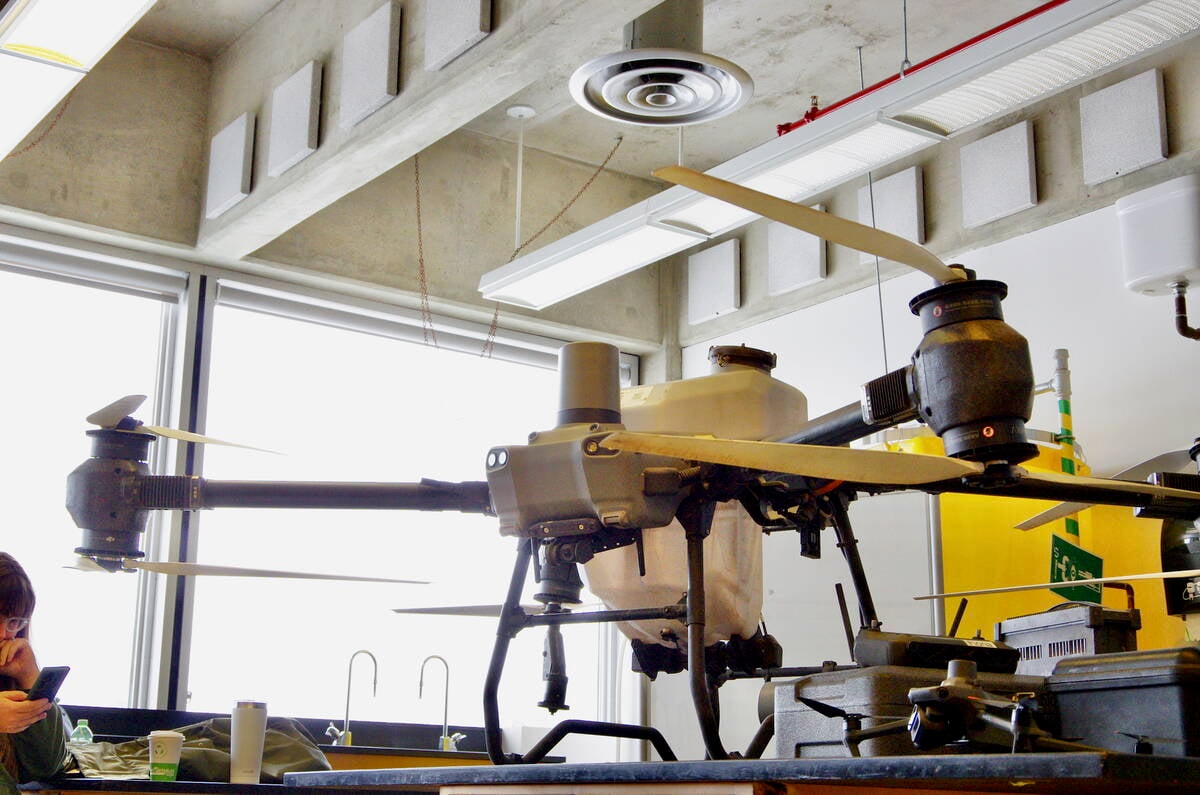Gord Gilmour’s recent editorial (‘Playing with trains,’ February 16, 2017) makes some valid points related to Canada’s grain supply chain. We agree that canola crush has been good for farmers, and the supply chain has been resilient this winter. Unfortunately, Gilmour also perpetuates unhelpful fallacies, and he advocates policies that would hinder the performance of Canada’s grain supply chain.
His argument about the grain backlog in 2013-14 is based on the false premise that the railways had the capacity to move a record grain crop but were instead choosing not to. Not only does this defy logic – moving freight is how a railway makes money – but it ignores the realities of how a supply chain actually works. No efficient supply chain in the world can move an additional and unexpected 23.5 million tonnes of any product over a short period of time, even in the most ideal conditions.
Read Also

Manitoba trials work toward drone spraying approvals
Canada’s PMRA says pesticides need drone-specific labels before drone spraying can take off; Manitoba crop trials are adding data towards that approvals process.
The 2013-14 grain crop was so unusually large that it had the equivalent of 13 football stadiums full of grain over and above a typical year’s crop size. The simple fact remains that CP moved more grain in 2013-14 than in any previous year, ever. The record grain movement was achieved in spite of harsh winter conditions that necessitated shorter and slower trains to ensure safe movement. When the facts are considered, one cannot reasonably conclude that there was a railway performance failure.
The “solutions” he supports would actually harm the performance of the supply chain. Government regulation that attempts to provide premium rail service for the few can only lead to a slower, less predictable, less efficient and higher-cost system for all. Further, the expanded interswitching limit he supports is already hurting the Canadian grain supply chain. The interswitching regulation does not exist in the U.S. Using non-compensatory rates U.S. carriers take traffic from the Canadian rail system and move it to the U.S. rail system. There is no reciprocity for Canadian carriers to attract U.S. volumes to their system. This means that there is a loss of revenues, jobs and taxes to the U.S. rail system. In effect, the Canadian grain supply chain is actually subsidizing U.S. grain movement by allowing U.S. rail carriers to become more efficient and profitable from increased network density and economies of scale.
Expanding the capacity of all supply chain elements is essential to move more grain to market, as the system is only as strong as its weakest link. One example is the ever-increasing market preference to use Vancouver as a port outlet for grain. Vancouver terminal facilities were a significant constraint in 2013-14 and it remains one today. Like all ports, Vancouver has finite capacity. Trying to push more grain through an overcapacity port simply causes ripple congestion throughout the supply chain, slowing down the entire system. The volume of grain moving through Vancouver must be sized to port capacity. All the railway capacity in the world is useless if the port terminal is so congested that it cannot get grain onto vessels.
Our collective goal must be to create the most efficient rail supply chains possible – one that is optimized to benefit all shippers, while maintaining the lowest freight rates in the world to ensure Canadian commodities are competitive. This can only be achieved through capacity-enhancing investments and innovative commercial solutions, which has been happening.
Since 2013-14 there has been significant investment in capacity-enhancing infrastructure throughout the grain supply chain. CP alone has invested more than $3 billion to improve capacity and velocity. And, importantly, other supply chain partners have invested, resulting in expanded capacity for grain country elevators, new in-country grain terminals, and enhanced terminal capacity at ports.
Working in partnership with our customers, CP has also made some fundamental changes to our grain service product offering with the launch of our Dedicated Train Program, which provides customers with much greater clarity, control and predictability of car supply. Seventy-five per cent of our grain operations are now being served by this program.
New solutions to export greater volumes of Canadian grain will come from commercial partnerships and investment, not centrally planned government regulation and free rides for U.S. railroads.
James Clements is vice-president of strategic planning and transportation services for Canadian Pacific.















